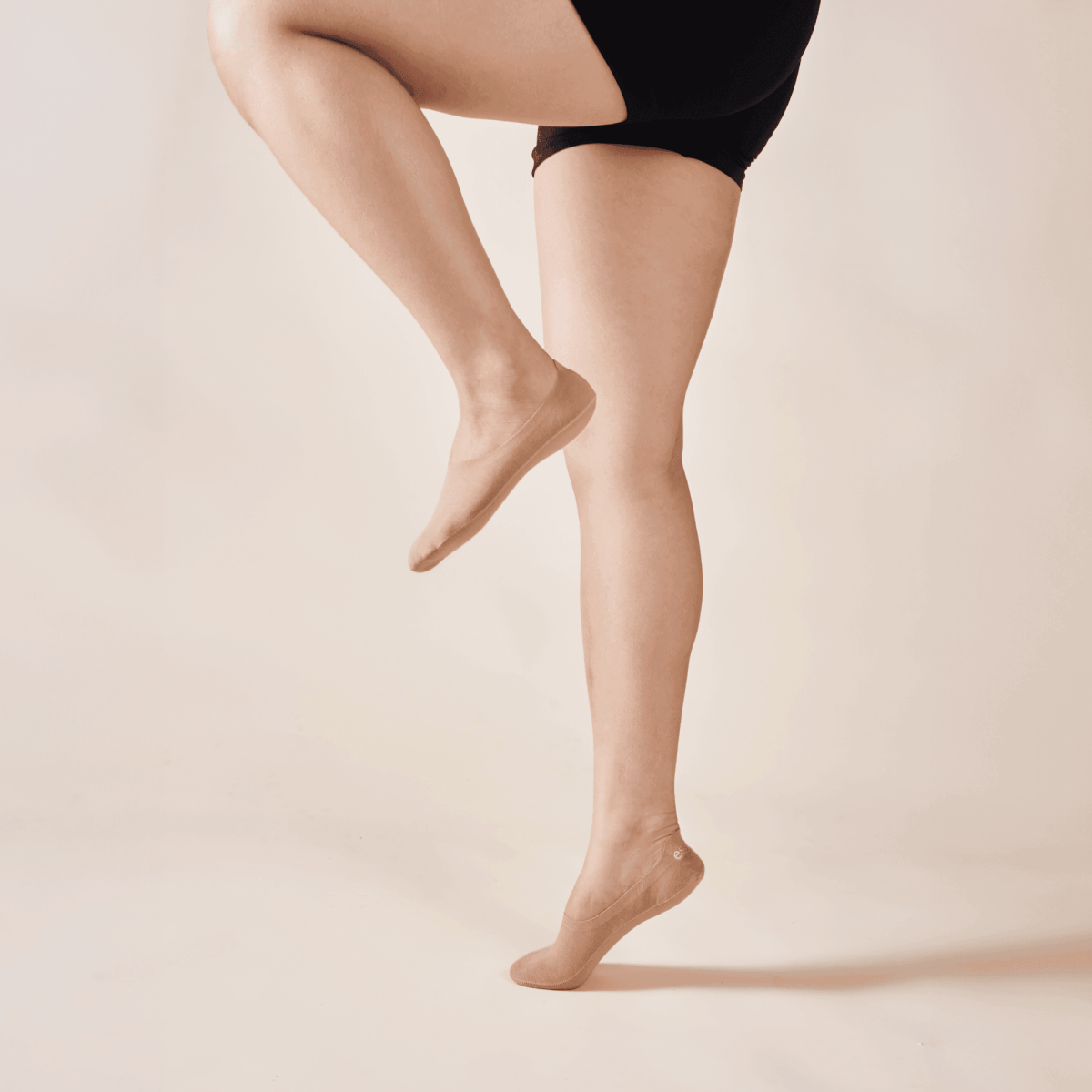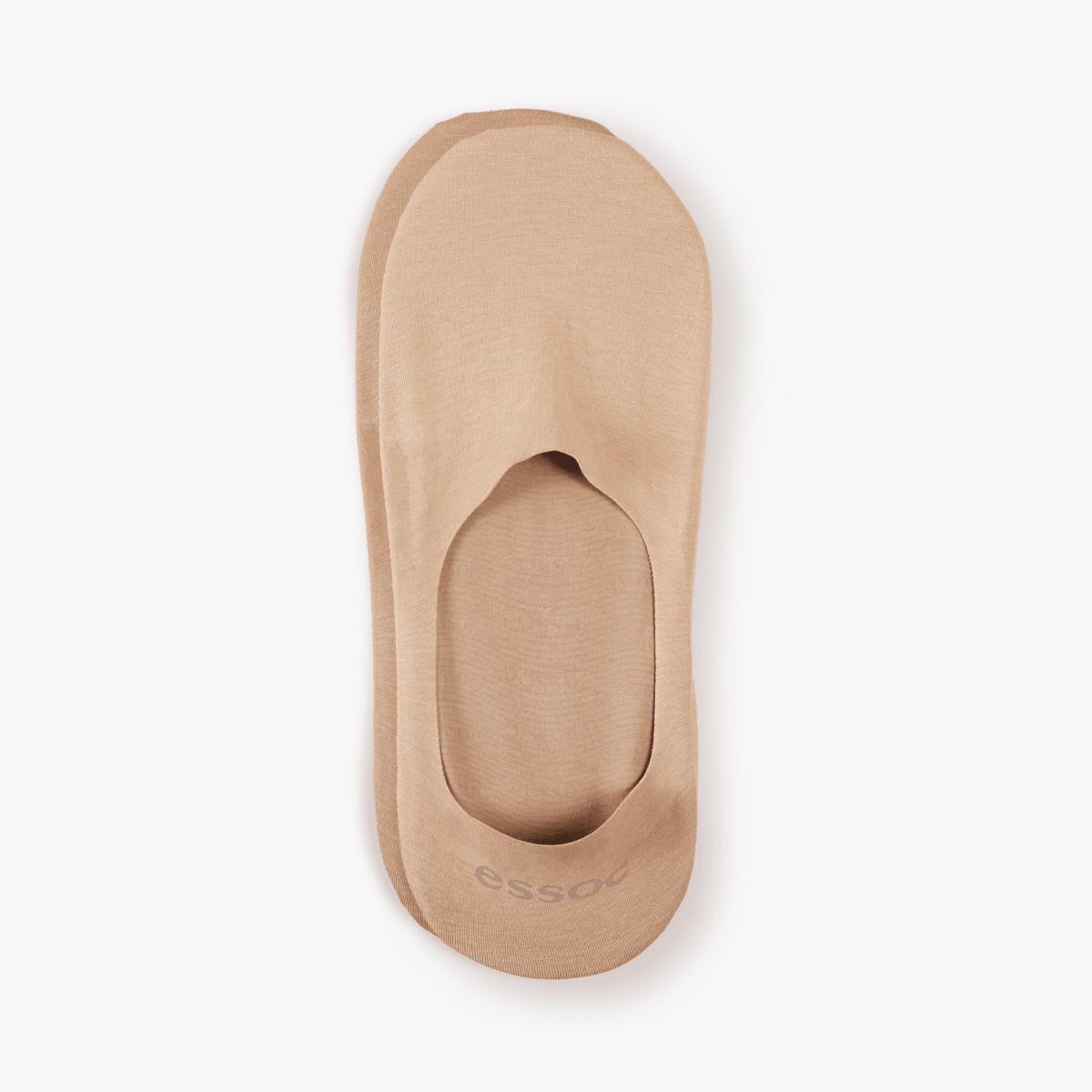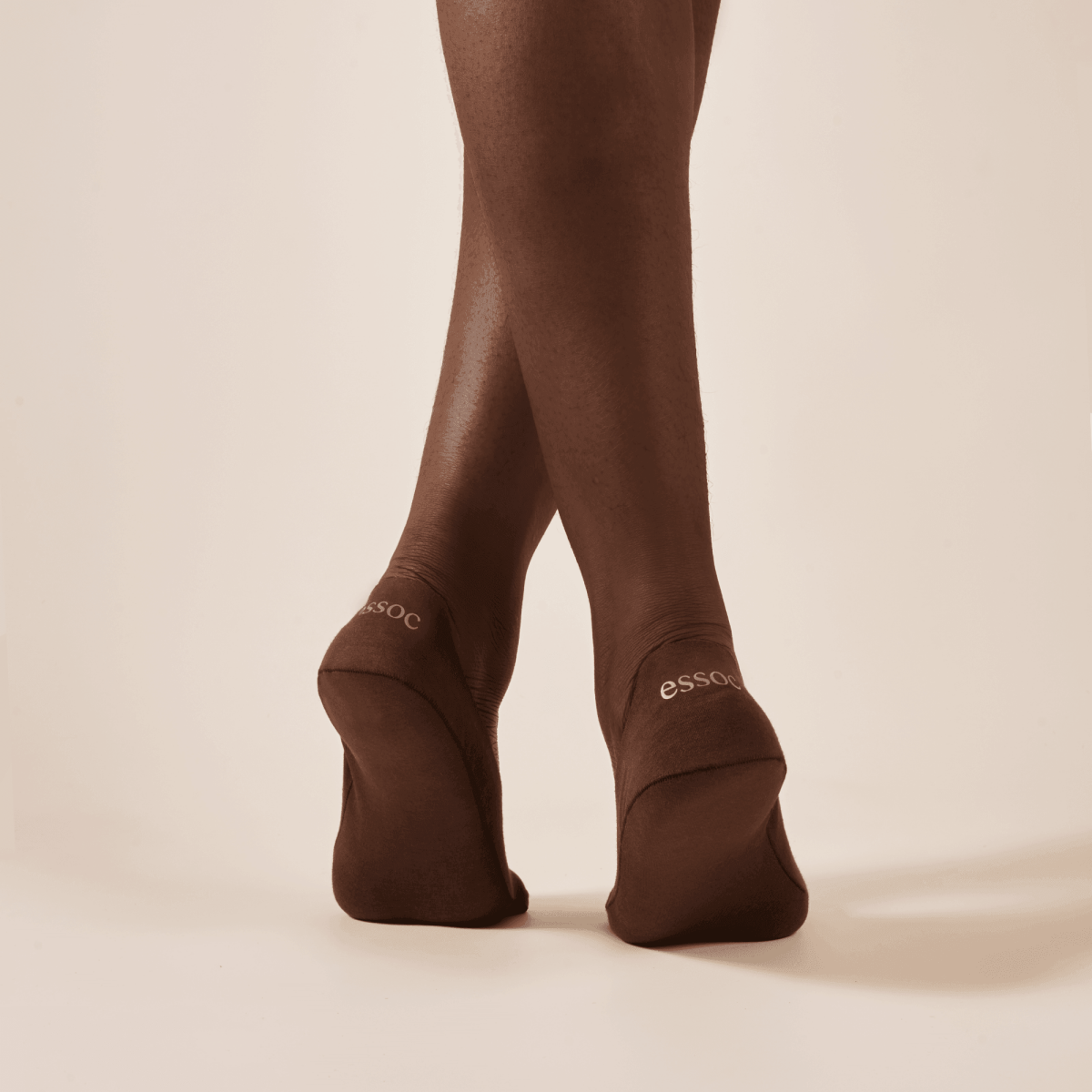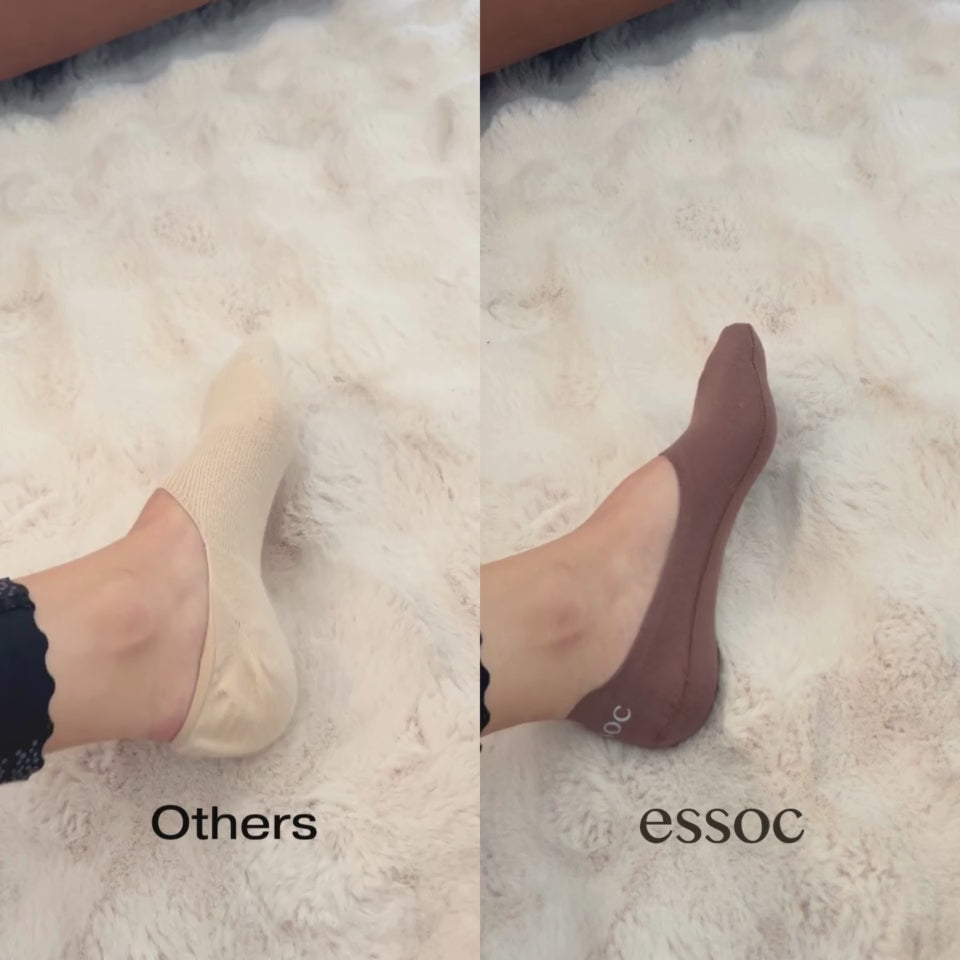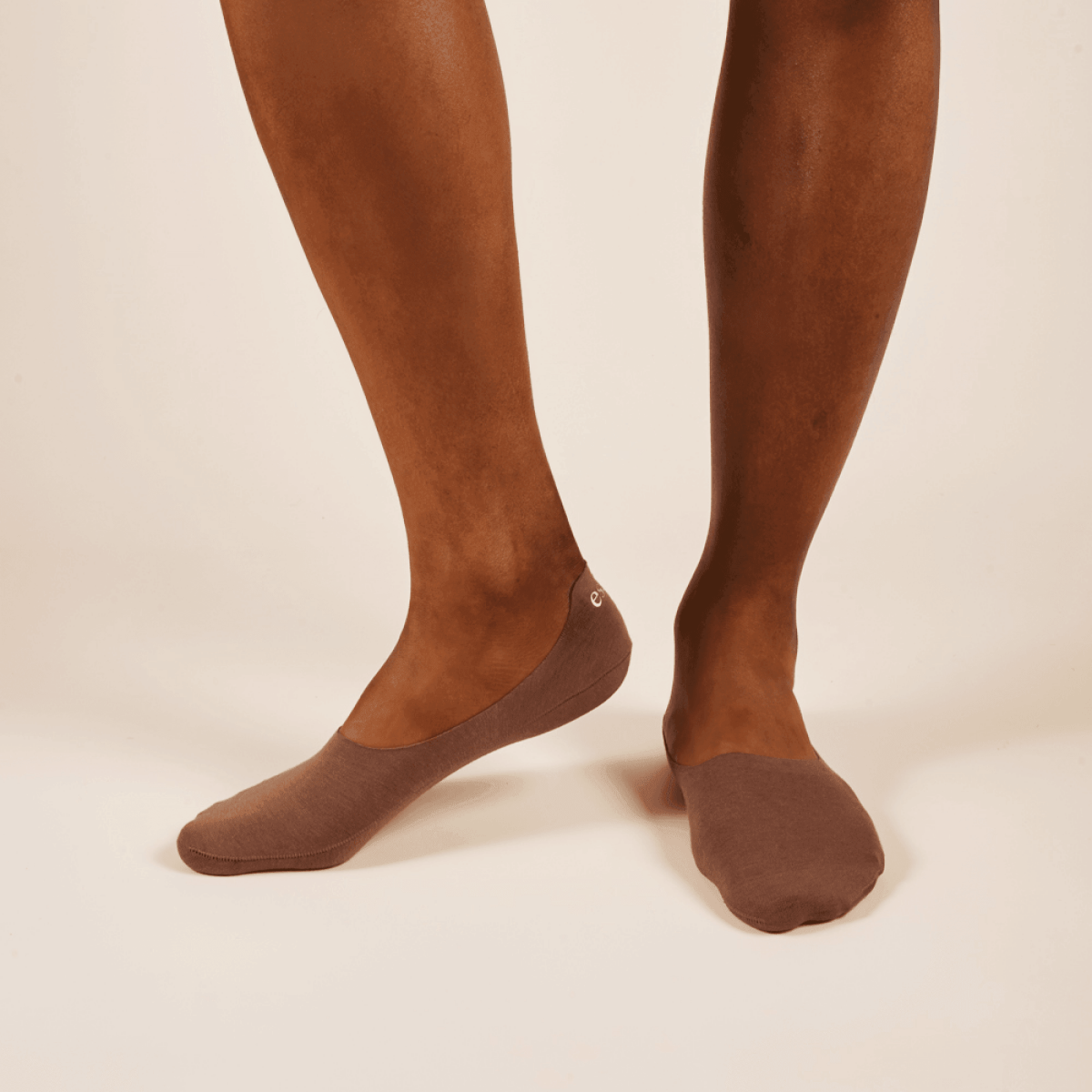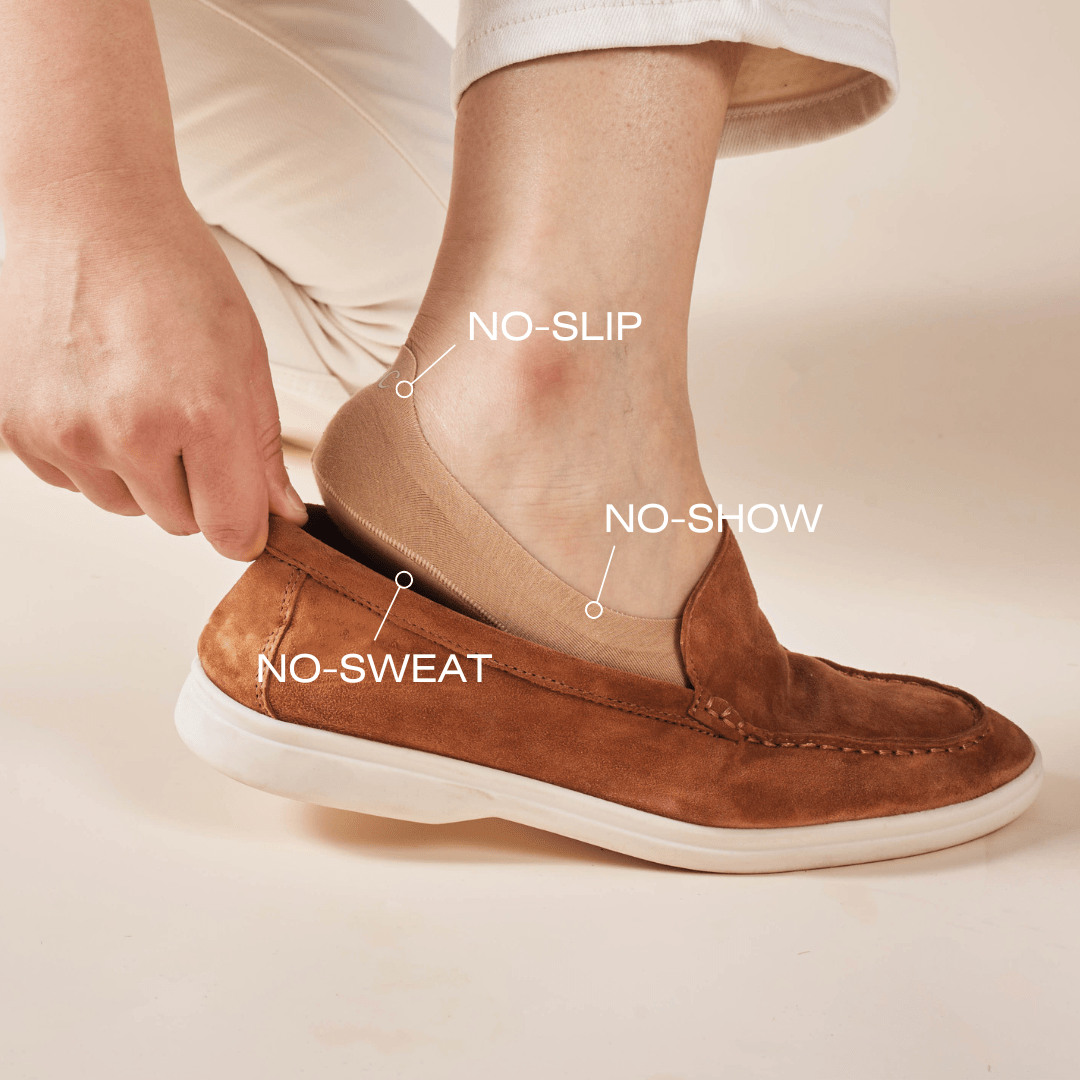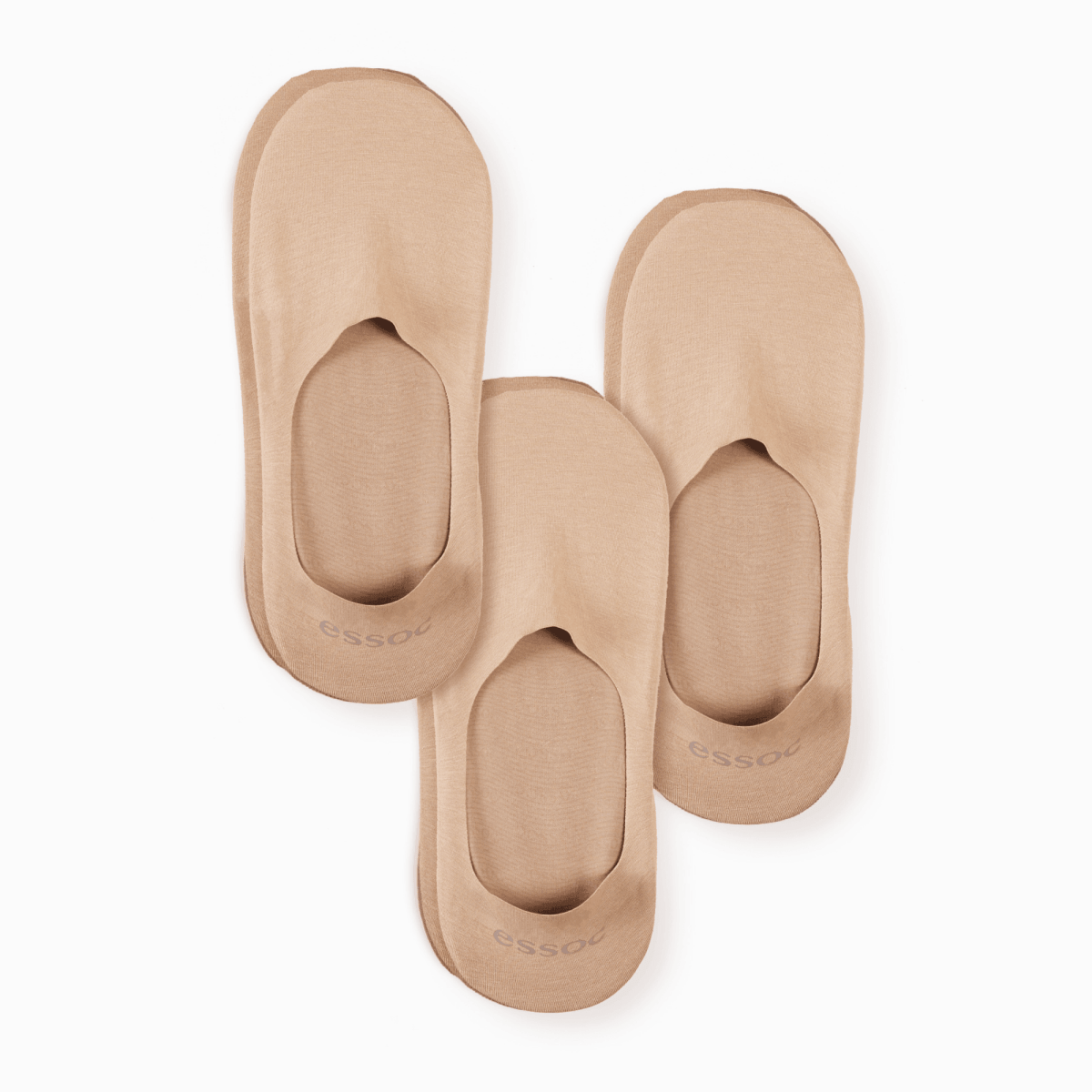Soft socks have always been about comfort, but the materials behind them matter just as much. Rayon and modal, two cellulose-based fibers, are quietly changing the way socks feel, perform, and last. These semi-synthetic textiles bring softness, breathability, and moisture-wicking to the forefront, while also answering calls for sustainability. Understanding how these fibers work and why blends with nylon and spandex matter can help anyone pick socks that don’t just feel good but stand up to daily wear. This article breaks down what makes rayon and modal special and how they’re shaping the future of soft sock materials.
Key Takeaways
- Rayon and modal fibers offer superior softness, breathability, and moisture management compared to traditional sock fabrics. (1)
- Modal is more durable and retains shape and color better than standard rayon, making it ideal for long-lasting socks.
- Blends with nylon and spandex improve elasticity and durability, while bamboo-derived rayon adds natural antimicrobial properties. (2)
Rayon and Modal: What Sets Them Apart in Sock Fabrics
Rayon and modal are often lumped together because modal is technically a type of rayon, but they have distinct qualities that affect how socks perform. Both come from cellulose, usually wood pulp, which makes them semi-synthetic fibers. Rayon is made by chemically processing cellulose to create a soft, silky fabric. It’s breathable and excellent at absorbing moisture, which is why it’s popular in warm-weather clothing and activewear. But pure rayon can be a bit fragile, especially when wet, and tends to lose strength over time.
Modal, on the other hand, is a refined form of rayon made mostly from beech tree pulp. The processing method gives modal fibers extra strength and flexibility. This means modal socks hold their shape better, resist shrinking, and maintain softness even after many washes. Modal also keeps its color longer, so socks don’t fade or look worn out quickly. For those who want socks that feel plush but last, modal is a step up.
Both fibers are breathable and wick moisture away from the skin, which helps keep feet dry and comfortable. This moisture management is crucial for preventing blisters and odor, especially in athletic or everyday wear socks. Rayon, especially when derived from bamboo, also has natural antimicrobial properties, which means it can reduce foot odor without relying on chemical treatments.
Why Blends Matter: Nylon, Spandex, and Fiber Processing
Pure rayon or modal socks sound great in theory, but durability and fit are just as important in practice. Rayon alone can be prone to pilling and weakening, and modal, while stronger, still benefits from reinforcement. That’s where blends come in.
Adding nylon and spandex to rayon or modal socks improves elasticity, shape retention, and overall durability.(3) Nylon fibers provide strength and abrasion resistance, which helps socks last longer through repeated wear and washing. Spandex adds stretch, so socks fit snugly without sagging or bunching. This combination keeps socks flexible and comfortable, adapting to different foot shapes and movements.
Fiber processing techniques have also advanced, reducing issues like pilling and fabric thinning. Manufacturers now treat modal and rayon fibers to enhance softness retention and colorfastness. These improvements mean socks made with these fibers don’t just feel soft at first they stay soft and vibrant through months of use.
The Sustainability Angle: Renewable Fibers for Eco-Conscious Consumers
One reason rayon and modal are gaining traction in the sock market is their environmental profile. Unlike fully synthetic fibers like polyester or nylon, rayon and modal come from renewable sources trees. Modal production, in particular, uses less water and energy compared to traditional rayon manufacturing. Some modal fibers are even certified for sustainable forestry practices.
Bamboo rayon socks are another sustainable option. Bamboo grows quickly without pesticides or fertilizers, making it a low-impact crop. When processed into rayon, bamboo fibers retain their softness and add natural antimicrobial benefits, reducing the need for chemical odor control.
Consumers increasingly want eco-friendly apparel, and socks made from these fibers fit the bill. They combine comfort with a smaller environmental footprint, appealing to those who care about sustainability but won’t compromise on performance.
How Rayon and Modal Improve Sock Comfort and Performance
Softness is the headline feature, but rayon and modal bring more to the table. Their moisture absorption and wicking properties keep feet dry by pulling sweat away from the skin. This is especially valuable in athletic socks or for people on their feet all day.
Breathability is another bonus. These fibers allow air to circulate, reducing heat buildup and preventing sweaty, uncomfortable feet. This helps avoid fungal infections and keeps socks feeling fresh longer.
Modal’s durability means socks maintain their fit and softness wash after wash. This is a big deal for everyday wear socks, which often lose shape or become stiff over time. Modal’s resistance to shrinking and pilling means fewer replacements and less waste.
Innovations and Trends in Soft Sock Materials
The future of soft socks lies in smart blends and fiber innovations. Manufacturers are experimenting with combining modal and rayon with other fibers to balance softness, durability, and elasticity. Flat knit socks, for example, use precise knitting techniques to reduce seams and improve comfort, often incorporating modal blends.
Advances in fiber processing have also led to socks that resist static cling and maintain color vibrancy. These improvements make socks look newer longer and feel better on sensitive skin.
Athletic socks are increasingly using modal blends for moisture control and odor resistance. Everyday wear socks benefit from modal’s softness and shape retention, making them a popular choice for consumers seeking comfort without sacrificing longevity.
Practical Tips for Choosing Rayon and Modal Socks
When shopping for soft socks, look for blends that include nylon and spandex alongside rayon or modal. Pure rayon socks might feel nice but won’t hold up well over time. Modal blends offer a better balance of softness and durability.
Check for bamboo-derived rayon if you want natural antimicrobial benefits. These socks help keep feet dry and odor-free without added chemicals.
Consider your activity level. For athletic use, socks with higher modal content and moisture-wicking features will perform better. For everyday wear, focus on softness retention and shape-holding properties.
Lastly, pay attention to care instructions. Modal socks usually wash well but avoid harsh detergents and high heat drying to preserve fiber integrity.
FAQ
What's the difference between rayon fabric and modal fibers in soft sock materials?
Rayon fabric is a semi-synthetic textile made from cellulose-based fibers, while modal fibers are actually a type of improved rayon with better modal fiber strength and modal fabric softness. Both create breathable sock fabric that works great for moisture-wicking socks. Modal shows better modal washing durability and sock softness retention compared to regular rayon, making it popular in ultra-soft sock blends.
How do bamboo rayon socks compare to other eco-friendly fibers for moisture control?
Bamboo rayon socks offer excellent bamboo fabric properties including natural antimicrobial socks benefits and superior moisture absorption in socks. This renewable textile source material provides sock breathability benefits while maintaining bamboo rayon sustainability. The bamboo rayon creates lightweight breathable socks that excel at sock moisture management, making them ideal for both athletic sock fabrics and everyday wear socks applications.
What makes sock fabric blends with nylon spandex blends better for shape retention in socks?
Modern sock fabric blends combine soft textile sustainability with practical benefits. Nylon spandex blends provide sock elasticity materials and sock fit and flexibility, while preventing fabric pilling resistance issues. These fiber blending in socks techniques create durable soft socks that maintain their form. The combination offers both softness and comfort socks appeal plus the stretch materials needed for proper fit.
How do fiber processing techniques and sock manufacturing technology improve sock durability improvements?
Advanced fiber processing techniques help create colorfast fabrics that resist fading and improve sock softness innovation. Modern sock manufacturing technology combines natural microfiber socks with synthetic materials for optimal sock fiber composition. These next-gen sock materials offer better sock odor resistance and anti-static properties while maintaining the lightweight sock fabric feel that consumers want in soft sock trends.
What role do socks with natural fibers play in eco-conscious apparel and soft textile sustainability?
Socks with natural fibers support eco-conscious apparel goals through renewable sources and sock fiber bio-degradability. Materials like socks with bamboo and other natural antimicrobial socks help reduce environmental impact. These eco-friendly sock production methods create soft socks for sensitive skin while supporting sustainable sock materials that appeal to consumers interested in future textile trends and sock apparel innovation.
Why are flat knit soft socks becoming popular for socks for active lifestyles and athletic applications?
Flat knit soft socks provide superior sock comfort innovation through better sock moisture control and enhanced sock breathability benefits. They're designed as moisture-wicking socks that excel in socks for active lifestyles by offering anti-odor socks properties. The construction creates lightweight sock fabric that works well for athletic sock fabrics while maintaining the sock softness that makes them suitable for everyday wear socks too.
How do rayon vs modal comparisons affect sock fabric breathability and comfort?
When comparing rayon vs modal, modal typically offers better rayon fiber versatility and superior sock moisture management. Both cellulose-based fibers create breathable sock fabric, but modal provides enhanced softness and comfort socks benefits with better socks resistant to shrinking properties. Modal's improved fiber strength makes it ideal for sock comfort innovation while maintaining the natural benefits that make these semi-synthetic textile options popular.
What does the soft sock market growth mean for future textile trends in sock fiber technology?
The soft sock market growth drives innovation in sock fiber technology and sock apparel innovation. Manufacturers focus on creating socks for moisture control using advanced fiber blending techniques. Future textile trends point toward more eco-friendly fibers combined with improved sock durability while maintaining ultra-soft sock blends. This includes better anti-static properties and enhanced soft sock fiber innovation that meets consumer demands for both comfort and sustainability.
Conclusion
Rayon and modal fibers are quietly revolutionizing soft socks by offering a combination of comfort, breathability, and moisture management that cotton and synthetics struggle to match. Modal’s durability and colorfastness make it especially suited for socks that need to last and feel good through repeated wear. Blends with nylon and spandex add the stretch and strength necessary for a perfect fit and longer life.
Sustainability is another big factor driving their popularity. These fibers come from renewable sources and often involve eco-friendlier production methods, appealing to consumers who want soft socks that don’t cost the earth.
References
- https://vnpolyfiber.com/what-do-you-know-about-modal-fiber-and-modal-fabric/
- https://www.sciencedirect.com/science/article/pii/S2773139124000338
- https://pubmed.ncbi.nlm.nih.gov/36837315/


